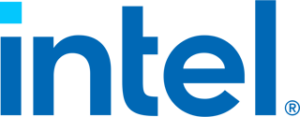Deutsche Telekom, Orange, Telefónica, TIM and Vodafone has inked a MoU to boost O-RAN development across Europe
A group comprising some of Europe’s largest telecommunications operators updated a list of priority technical requirements for the development of O-RAN systems.
In a statement, the telcos noted that the new release is an update of the document published in June 2021 as part of the MoU on O-RAN signed by Deutsche Telekom, Orange, Telefónica, TIM and Vodafone.
“Release 1 focused on the main scenarios and technical requirements for each of the building blocks of a multi-vendor RAN. Release 2 builds on those requirements and focuses in particular on intelligence, orchestration, transport and cloud infrastructure, aiming at defining a fully automated and interoperable Open RAN system,” the partners said. “The energy efficiency requirements and targets to support sustainable Open RAN deployments have also been addressed. It is expected that Open RAN networks will gradually become more energy efficient than traditional RAN, benefiting from Open RAN concepts such as cloudification, disaggregation and native AI.”
The carriers also highlighted that the overall objective is to provide the minimum requirements to serve as a basis for acceptable O-RAN solutions to be deployed in a timely manner in Europe, across other regions and ultimately accelerate the global adoption of the technology.
These requirements will evolve over time following the progress of O-RAN standardisation and market development of Open RAN solutions, the European carriers said.
In November 2021, Deutsche Telekom, Orange, Telefónica, TIM and Vodafone published a report calling upon policymakers, EU member states, and industry stakeholders to collaborate and urgently prioritize O-RAN. “Open, intelligent, virtualized and fully interoperable RAN is essential if Europe is to meet its target of 5G for all by 2030,” the operators stated. “It will help drive stronger, more resilient supply chains and platforms, as well as promote digital autonomy and continued technology leadership.”
However, the report also stated that Europe risks falling behind North America and Asia in the development and deployment of next-generation networks, if the region fails to have a collaborative approach in the O-RAN field.
The report showed that Europe had 13 major O-RAN players as of the end of last year, versus 57 for the rest of the world. However, many European players are at an early stage of development and have not yet secured commercial O-RAN contracts.
The five recommendations outlined in the report include ensuring high-level political support for open RAN and declaring it a strategic priority; creating a regional alliance for next generation communications infrastructure by the European Commission; and tax incentives for local companies working across the open RAN value chain. The European operators also noted that it is necessary to promote European leadership in standardization of open RAN technology as well as working with international partners.
The report also highlighted that European vendors are not present in all six major technology and service categories that comprise the Open RAN value chain, such as cloud hardware. A limited number of semiconductor suppliers in the region was also highlighted in the report.
In January 2021, these five operators had announced a MoU to support the rollout of O-RAN technology.


